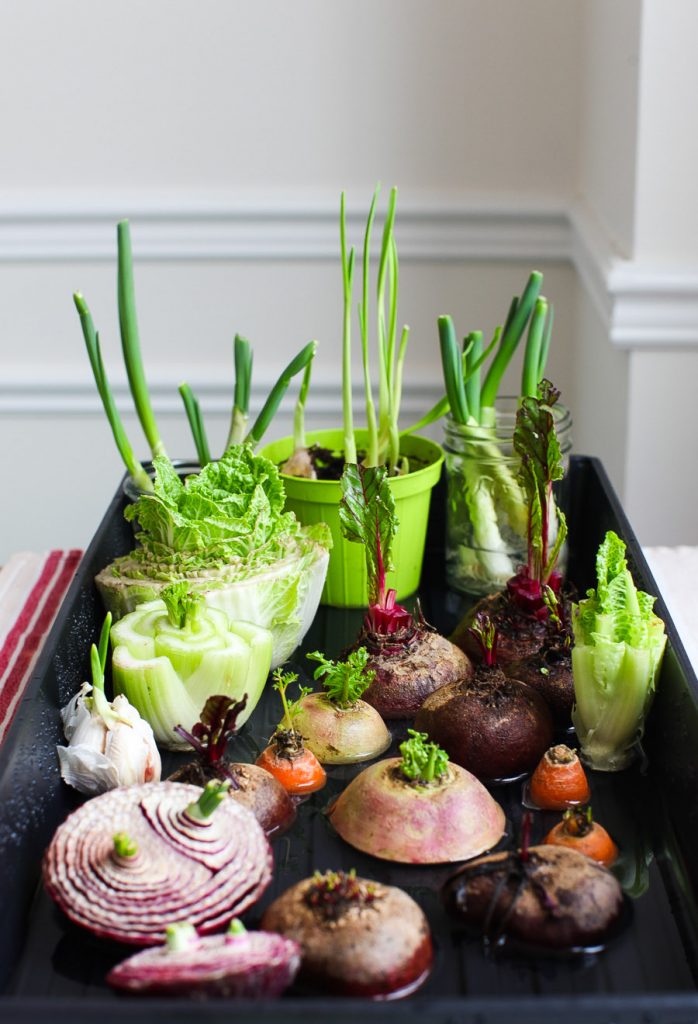Grow Veggies from Scraps: Easy Tips

Imagine transforming your kitchen scraps into a thriving garden. Sounds too good to be true, right? Well, it's not! With a bit of know-how and some simple steps, you can regrow vegetables from scraps and enjoy fresh, homegrown produce. Not only does this reduce food waste, but it also adds a fun and rewarding twist to your vegetable gardening. So, let's dive in and explore how to grow vegetables from kitchen scraps!
Why Grow Veggies from Scraps?
Kitchen scrap gardening is more than just a trend; it's a sustainable practice that benefits both you and the environment. By regrowing vegetables from scraps, you reduce food waste, save money, and enjoy the satisfaction of growing your own food. Plus, it's a great way to introduce kids to the joys of gardening and teach them about the cycle of life.
What You Need to Get Started
Before you start, gather a few essentials:
- Kitchen scraps ( roots, tops, seeds, and pits)
- Water
- Soil or potting mix
- Containers or pots
- A sunny spot
Vegetables You Can Regrow from Scraps
Not all vegetables can be regrown from scraps, but many can. Here are some of the easiest ones to start with:
Green Onions
Green onions are perhaps the easiest vegetable to regrow. Simply place the white roots in a glass of water, change the water every few days, and watch them grow. Once they're a few inches tall, you can transplant them into soil.
Lettuce
Lettuce is another easy one. Place the base of the lettuce head in a bowl of water, and in a few days, you'll see new leaves sprouting. Transplant it into soil once it's grown a bit.
Celery
Cut off the base of the celery stalk and place it in a bowl of warm water. Keep the top of the base unsubmerged. After a few days, you'll see new growth. Transplant it into soil after a week.
Carrot Tops
While you can't regrow the carrot itself, you can grow carrot greens, which are edible and delicious. Place the carrot top in a bowl of water, and in a few days, you'll see new greens sprouting.
Garlic
Place a single clove of garlic in a glass of water. Once it sprouts, plant it in soil. You can harvest the green shoots or wait for a new bulb to form.
Potatoes
Cut potatoes in half, ensuring each piece has an "eye." Let them dry out overnight, then plant them in soil with the eye facing up.
How to Grow Vegetables from Kitchen Scraps: Step-by-Step
Now that you know which vegetables you can regrow, let's dive into the process.
Step 1: Prepare Your Scraps
The first step is to prepare your scraps. For root vegetables like carrots and beets, cut off the top of the vegetable, leaving about an inch of the root attached. For leafy greens like lettuce and cabbage, cut off the base of the plant. For garlic and onions, use individual cloves or the root end.
Step 2: Place in Water
Place your scraps in a bowl or glass of water. Make sure the water covers the base of the plant but doesn't submerge the top. Change the water every few days to prevent mold and bacteria growth.

Step 3: Wait for Growth
Be patient. It can take anywhere from a few days to a couple of weeks for your scraps to start growing. Keep an eye on them and enjoy the process.
Step 4: Transplant into Soil
Once your scraps have grown a bit, it's time to transplant them into soil. Use a well-draining potting mix and a container with drainage holes. Plant your scraps at the same depth they were in the water.
Step 5: Care for Your Plants
Water your plants regularly, ensuring the soil stays moist but not waterlogged. Place them in a sunny spot, and watch them grow.
Tips for Successful Kitchen Scrap Gardening
- Be Patient: Growing food from scraps takes time. Don't be discouraged if you don't see growth right away.
- Experiment: Different vegetables have different needs. Don't be afraid to try different methods and see what works best for you.
- Have Fun: Remember, this is a learning experience. Enjoy the process and don't worry too much about the outcome.
The Benefits of Regrowing Vegetables from Scraps
Regrowing vegetables from scraps has numerous benefits. It's a great way to reduce food waste, save money, and enjoy fresh, homegrown produce. Plus, it's a fun and educational activity for kids and adults alike.
/harvested-vegetables--gardening-gloves-and-hand-cultivator-garden-576798993-5b419bba46e0fb00374ee206.jpg)
Conclusion
Growing vegetables from kitchen scraps is a rewarding and sustainable practice. It's a great way to reduce food waste, save money, and enjoy fresh, homegrown produce. So, why not give it a try? Start with some easy vegetables like green onions or lettuce, and watch your garden grow. Happy gardening!
FAQs
Can you regrow vegetables from scraps without soil? Some vegetables, like green onions and lettuce, can be regrown in water alone. However, most vegetables will need to be transplanted into soil eventually.
How long does it take to regrow vegetables from scraps? The time it takes to regrow vegetables from scraps varies depending on the type of vegetable. Some, like green onions, can start to grow in just a few days, while others, like potatoes, can take a few weeks.
Can you regrow vegetables from scraps indoors? Yes, many vegetables can be regrown indoors. Just make sure they have access to plenty of sunlight.
What vegetables can you not regrow from scraps? Some vegetables, like corn and most root vegetables (except for potatoes and sweet potatoes), cannot be regrown from scraps.
Is it safe to eat vegetables regrown from scraps? Yes, it's safe to eat vegetables regrown from scraps, as long as you've grown them in clean conditions and used fresh, unspoiled scraps.
0 Response to "Grow Veggies from Scraps: Easy Tips"
Post a Comment